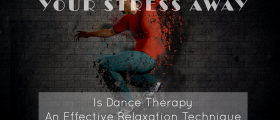
Posttraumatic stress disorder is an emotional condition (anxiety disorder) which develops after an extremely stressful experience. PTSD affects rape victims, war veterans, people with highly frightening or near death experiences. People with PTSD can suffer relapses of the stressful experience, avoid locations and people related to them and can also suffer from hyperarousal.
Complex posttraumatic stress disorder (C-PTSD) can occur if a person had a prolonged traumatic experience or a series of traumatic experiences.
Treatment of posttraumatic stress disorder
Methods for treating PTSD can be both medical and psychological. Psychotherapy encourages individuals to talk about the traumatic event, to explore and modify distorted ways of thinking about the trauma and teaching the person to handle PTSD symptoms.Educating people with PTSD is also important. By facing the fact that their state is caused by extreme stress rather than weakness, that there are many people who have gone through the same hardship, learning how their state is treated, removing disillusions about their state, their chances of recovering and handling their state increase dramatically.Introducing individuals with PTSD to practical approaches to their handling their emotional and physical symptoms has proven a valuable tool. This includes helping them regain confidence, improve communication skills, manage anger and anxiety and use breathing and relaxation methods.
Cognitive Behavioral Therapy
After being armed with these techniques the practitioner may lead the person with PTSD through their traumatic experience while the person uses the newly learned techniques. This method is called cognitive behavioral therapy and can be both individual and group. It can help people recognize trauma based thoughts and beliefs, relations between feeling and thought, explore negative thoughts in common with other individuals with similar experiences. The goal is to bring new perspective and alternative ways of thinking to people with PTSD.
Eye Movement Desensitization and Reprocessing
Another form of cognitive therapy is Eye movement desensitization and reprocessing (EMDR). The practitioner leads the PTSD individual in conversation through his traumatic experience while the individual follows practitioner’s rapid finger movements with his eyes. There is no confirmation that the rapid eye movement in this method increases its effectiveness.Family support and involvement in family counselling, parenting classes, couple’s counselling has proven beneficial for both the PTSD individuals and their loved ones. Family members can increase the practitioners understanding of the PTSD individual. This is accomplished by sharing relevant history related to the individual and their behavior after the trauma.Sleep problems are common to PTSD. These problems can be addressed by training relaxation methods, positive self talk and imagery rehearsal therapy (practicing adaptive ways of handling the nightmares). By resolving the sleeping issues the chance of decreasing other PTSD symptoms improves drastically.


-Causes,-Symptoms,-Diagnosis-And-Treatment_f_280x120.jpg)














Your thoughts on this
Loading...